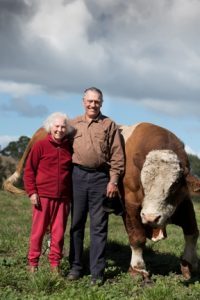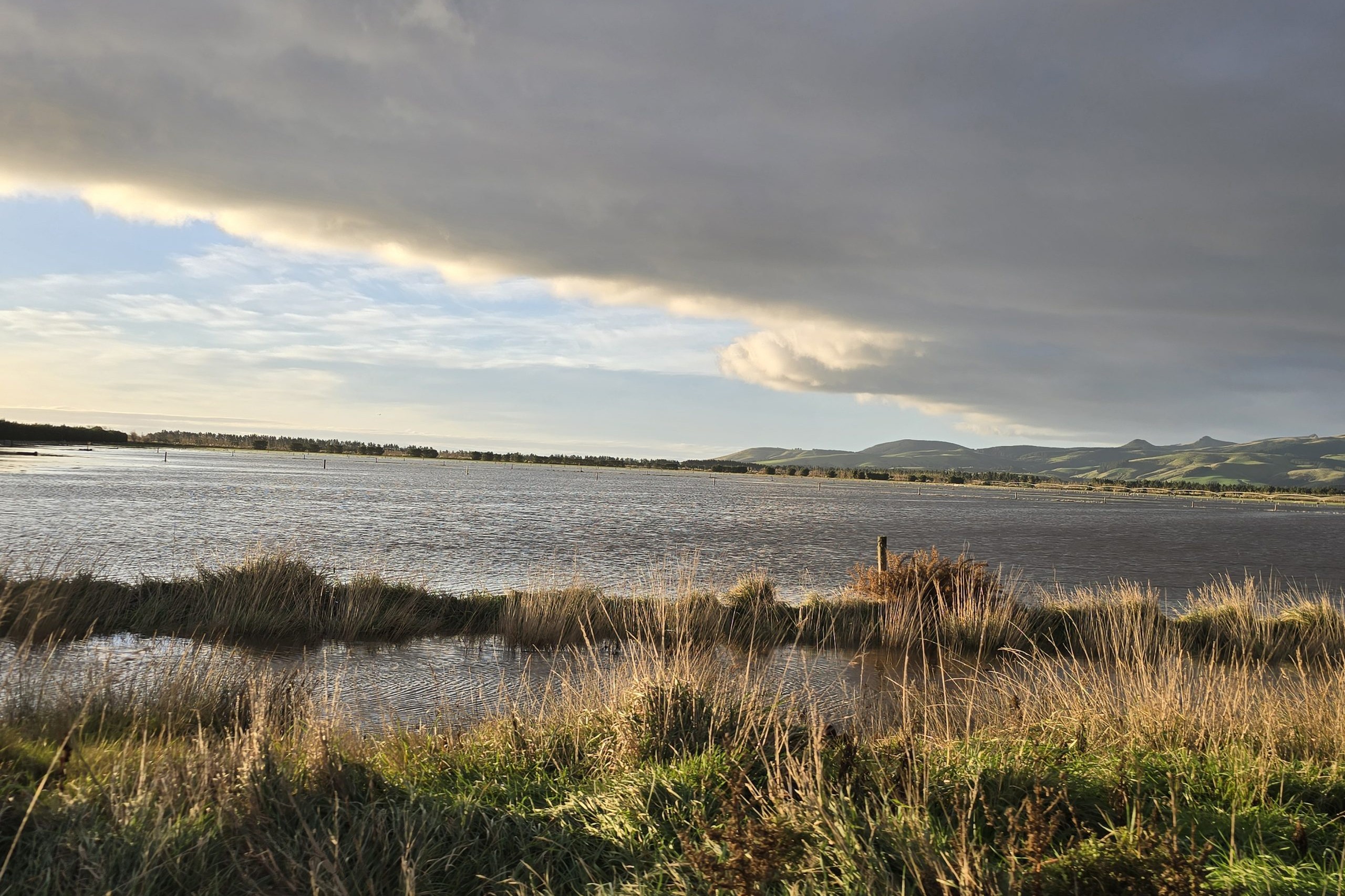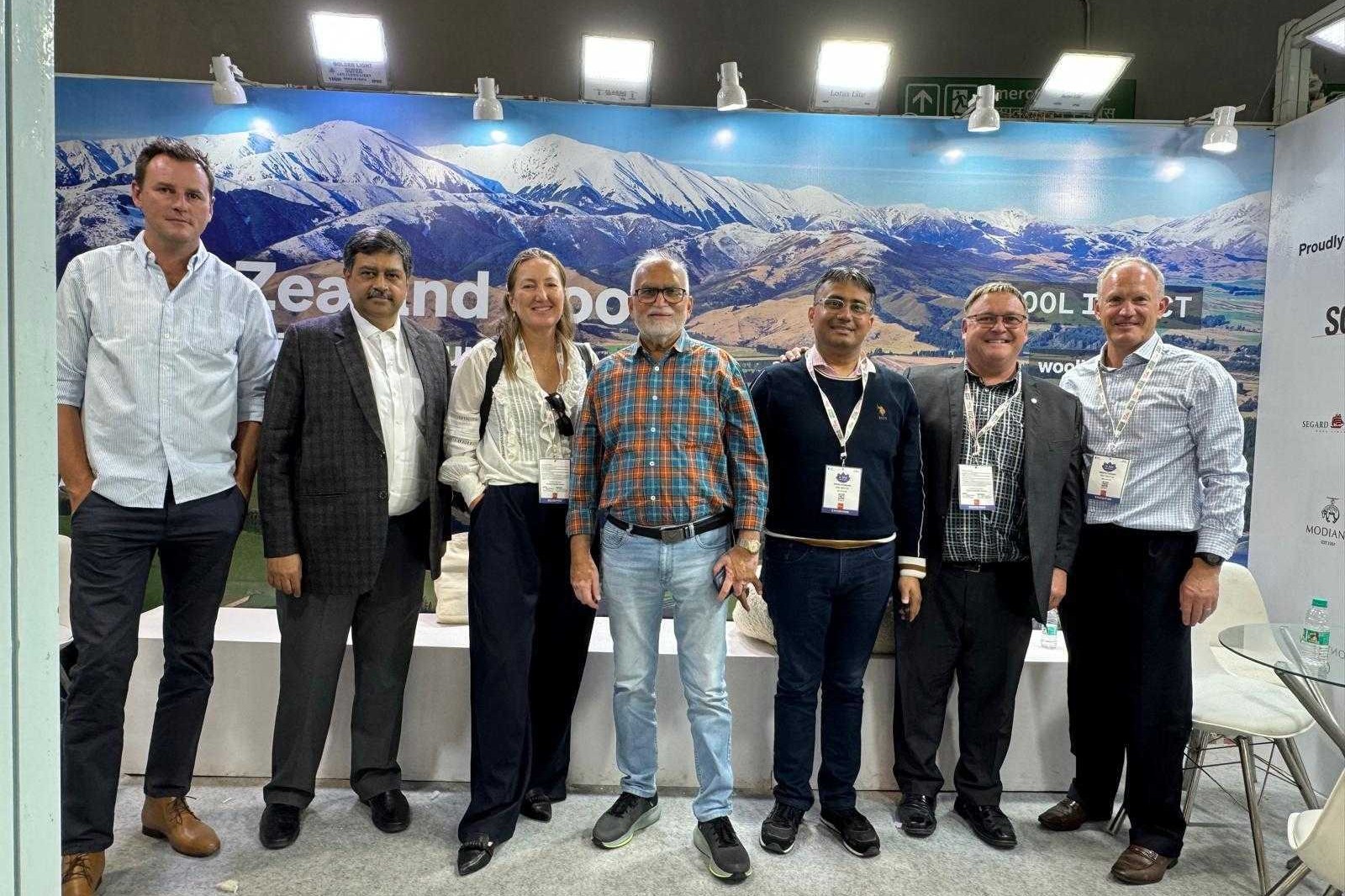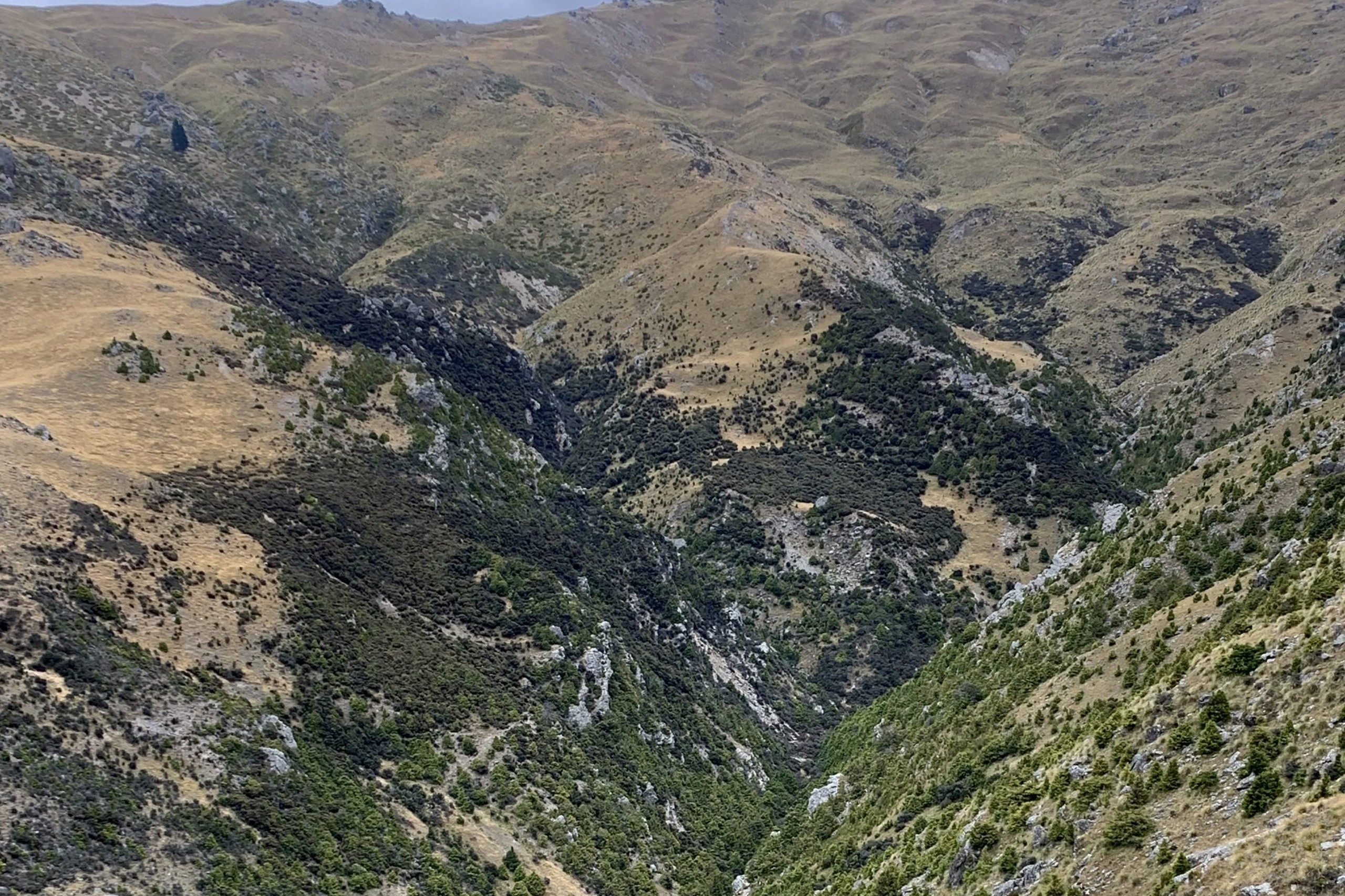Noted veterinarian and breeder Tony Thompson has seen many changes in the decades he’s been involved in the cattle industry. Russell Priest reports.
There’s a lot more to Tony Thompson than his undisputed ability to breed and show Simmental cattle. Beneath his tall, commanding frame and voice lies a self-made man with many hidden talents. And let’s not forget the contribution of his childhood sweetheart and devoted wife, Glennis.
At 73, Tony’s seen a lot of changes in the beef industry both from his veterinary perspective specialising in cattle reproductive physiology and as a breeder of stud and commercial Simmental bulls.
Brought up in a family of seven on a sheep and beef farm at Brunswick, 27km north of Wanganui, Tony’s desire to broaden his scientific knowledge resulted in his being accepted as a first-year student to study at the newly established veterinary school at Massey University. Before this all veterinary students had to go to Australia to qualify.
‘The breeding cow has been crucified because these professionals have not been able put a monetary value on their role.’
Financed by a couple of government bursaries which are no longer available, and income generated from shearing during the summer breaks, Tony with Glennis’ help put himself through the veterinary course.
“Being a tall person, I found shearing difficult however I eventually cracked my 300,” Tony says.
After graduating at the end of 1967, Tony and Glennis married then headed north to Matamata where Tony did a short stint with a veterinary group specialising in horses.
The big OE
The desire to do their OE saw them buy return tickets to the United Kingdom on a P&O liner. The Suez Canal was impassable because it was blockaded following the Six-Day Arab-Israeli war, so sea travel to England was via Australia, the southern Indian Ocean, Capetown and the Atlantic.

On arrival in London they immediately headed to New Zealand House to see if Tony had secured the scholarship he applied for en route.
This Cunninghams’ Transport scholarship involved two years study at Cambridge University under Dr Roger Short, a world-leading expert in equine reproductive physiology
The scholarship was established to investigate the low reproductive rate in horses so Tony’s research involved collecting reproductive tracts of slaughtered mares (there was a large trade in horse meat between the UK and Europe), flushing the fallopian tubes and examining the unfertilised eggs. At the end of his studies he was offered the opportunity to do a PhD to investigate the possibility of developing a human contraceptive using the research he had done on horses. Tony thought this was rather bizarre.
While doing his research he realised PhD students were the unpaid servants of the professors, doing all the work but gaining no recognition. He has now become quite cynical about PhDs.
“With a PhD you learn more and more about less until you learn everything about nothing.”
He and Glennis looked at all aspects of the environment in which they were likely to be immersed and decided they would return to NZ. His professor-to-be wasn’t impressed when he turned down this “offer of a lifetime” as he called it.
Putting his reproductive knowledge to work
While at Cambridge he met a Mr Rowson who was the first person to study embryo transplanting in cattle so on his return to NZ Tony was keen to start using emerging reproductive technologies for cattle.
Inseminating hundreds of cows of numerous breeds with imported Charolais semen for American millionaire, Bunker Hunt at Matamata was his first encounter with large-scale artificial insemination (AI) work.
The attraction of performing embryo transfer work in cattle saw the Thompsons move to Waipukurau in 1974 to join the Waipukurau vet club. Unfortunately, the vets there were interested in doing the work surgically which did not appeal to Tony as he considered it too “messy” so he ended up pregnancy-testing 50,000 cows while the other vets pursued their interest.
After attending a course in South Australia in 1983 covering non-surgical procedures for embryo recovery and transfer Tony returned to Waipukurau and offered the service to clients in the area.
One of his first jobs was for Hilton Gudsell, a Hawke’s Bay orchardist who had bought a farm at Keruru as a going concern and wanted to establish a Charolais stud. All the cows on the farm were left open (unmated) while Tony flushed 11 pure Charolais heifers and transferred the embryos to these cows. In three years a 60-cow-purebred Charolais herd was established with the sale of the purebred bulls from the embryo transplant programme paying for the entire project.

A similar programme was undertaken for a group of investors wanting to establish a black Maine-Anjou herd at Ashley Clinton.
Later, an approach from David Brownrigg saw Tony and his team AI up to 2000 cows a year with frozen Wagyu semen and implant imported frozen Wagyu embryos into recipients. The resulting purebred Wagyu cows were flushed and the embryos implanted. Four cows a day were flushed collecting as many as 40 embryos a cow and up to 40 recipients a day were implanted. Surplus embryos were frozen for future implantation.
The reproductive physiology team headed by Tony included up to four vets and six technicians at any one time.
“They did a sterling job often working extremely long hours,” Tony says.
Technology developed by the dairy industry to dilute and transport fresh semen enabled Tony and his colleague Richard Lee to inseminate up to 200 synchronised females a day with fresh semen from the Wagyu bull
Tony Thompson the farmer
While this work was going on Tony was also performing similar procedures on the Glen Anthony Simmental herd. Established in 1973 in Matamata with a single imported purebred cow, it was transferred in 1974 on to a 90-hectare block near Waipukurau. Later, another 130ha block at Onga Onga was added to their business.
After 40 years of doing this work time has finally caught up with Tony.
“I went to AI my own heifers this year and my fingers wouldn’t work and I had no feeling in their tips,” Tony says.
“It’s very sad really.”
The Thompsons became a little distracted in the 1980s when they deer-fenced half their Waipukurau farm and ran 150 velveting stags. A purpose-built shed was erected and Tony performed the velveting operation. They grossed $1000/ha.
Tony was a keen polo-player so the farm also ran a team of polo ponies. Both these activities were brought to an abrupt end when Tony had both of his hips replaced during the same operation.
At its peak the Glen Anthony Simmental herd numbered 150 cows with up to 25 bulls being sold annually. The Onga Onga block proved ideal for wintering cows as much of it was river accretion so little mud was created by heavy feeding-out equipment in the winter. Sale bulls were grown out on the home block and initially sold in the Waipukurau sale yards until the disused deer shed was converted to a bull-selling arena.
With the sale of the Onga Onga block in 2008 the Thompsons reduced their herd to 60-70 cows and now sell about 15 bulls. An excellent sale last year saw them average $5000 a bull.
Beef industry changes
“Without a doubt the biggest change in the beef industry during my lifetime has been the massive influence of the dairy industry. Large tracts of easy country that once supported big beef breeding herds are now running either Friesian bulls, dairy heifers or wintering dairy cows,” Tony says.
He remembers when horses were a major means of transport and droving was the way livestock were moved from A to B.
“Nowadays all animals are carted in trucks, however I remember when large mobs of cattle were driven from Gisborne to southern Hawke’s Bay and the Manawatu/Rangitikei to be finished on easier country. Families like the Butlers and Brownriggs in Hawke’s Bay and the Hurleys and Duncans in the Rangitikei used to drove thousands of bullocks annually from Gisborne.”
During that era the beef industry was tiered. Farmers running beef herds on easier hill country used to finish all animals they produced. Those on harder hills sold most of their weaners, retaining only replacement females. Others retained all their weaners using the aged males to control surplus spring/summer growth or to develop country. These animals were generally sold as three-five-year-old bullocks to finishing farmers. Nowadays few of these animals are traded as most cattle are killed before their third winter.
Tony believes farm consultants and bankers have had a major influence on the class and sex of animals farmed.
“The breeding cow has been crucified because these professionals have not been able put a monetary value on their role,” Tony says.
“Nowadays they are more likely to lend money to a young farmer to buy Friesian bulls because the bottom line is easier to quantify. They place the role breeding cows play in maintaining feed quality for other stock classes in the too-hard basket.”
An animal welfare issue
With his experience as a vet Tony is in a unique position to comment on the mating of yearling heifers as he has often been the ambulance at the bottom of the cliff when farmers haven’t followed recommended practices.
“There’s no doubt in my mind there’s an animal welfare issue involved with mating heifers if you don’t do it properly. However, I recognise it provides an opportunity to improve profitability and reduce the generation interval.”
Tony recommends mating only well-grown heifers that have good pelvic areas (related to their frame score) and pelvic slopes and managing them so that they grow steadily throughout their pregnancy. Heavy feeding in the last month of pregnancy must be avoided, he says, as it produces fat in the vagina which interferes with the birth process.
Bulls selected for heifer mating should have good positive EBVs for calving ease and/or low birth weight, narrow heads and clean shoulders with a good neck extension.
Key facts
- Glen Anthony Simmentals
- Tony and Glennis Thompson, Waipukurau.
- Area farmed: 90ha (all flat-to-easy contour).
- Stock:
- 80 Simmental cows
- 18 R2 heifers
- 45 R1 heifers
- 22 R2 bulls
- 25 R1 bulls
- 4 herd sires.




